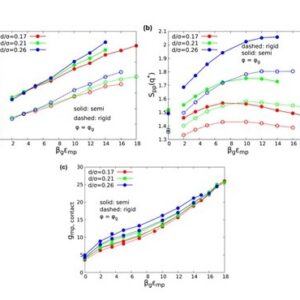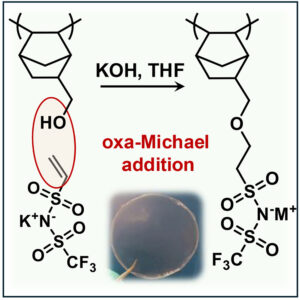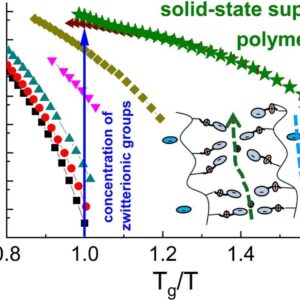Unveil the mechanisms driving correlated alkali ion and proton transport in polymers.
The goal of this Thrust is to understand and realize new mechanisms of superionic conductivity (Li+, Na+, H+) in polymer-based materials (i.e., > 1 mS/cm at room temperature).
Key questions:
- What are the fundamental physics controlling charge transport in polymers and what are the microscopic mechanisms that determine energy barriers for ion hopping?
- Why does correlated ion motion suppress charge transport in polymeric materials, while it enhances charge transport in superionic glasses?
-

Revisiting the Role of Mobile Ion Size for the Activation Barrier of Charge Transport in Single Ion Conducting Polymers
ACS Appl. Polym. Mater. 2025, 7, 15, 9661–9668
Publication Date: 20250724 -

Emergent nanostructure and ion transport in polyzwitterion/polyanion blends
Macromolecules 2025, 58, 16, 8658–8669
Publication Date: 20251208 -

Microscopic theory of activated ion hopping in polymerized ionic liquids and glasses
J. Chem. Phys. 162, 194906 (2025)
Publication Date: 20250521 -

Design of robust and versatile hydrocarbon-based single-ion-conducting polymer electrolytes
Cell Reports Physical Science, Volume 6, 2025, 102712
Publication Date: 20250716 -

Unraveling the pathway towards superionic transport in polymer electrolytes
Publication Date: 20250710 -

Single-Ion Conducting Polymer Electrolyte Enabled via Aza-Michael Addition
Macromolecules 2025, 58, 9, 4708–4714
Publication Date: 20250416